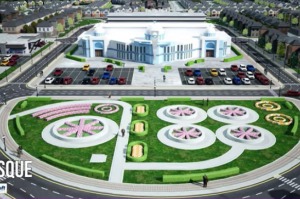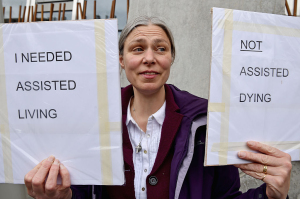How the coronavirus is changing the way we do church
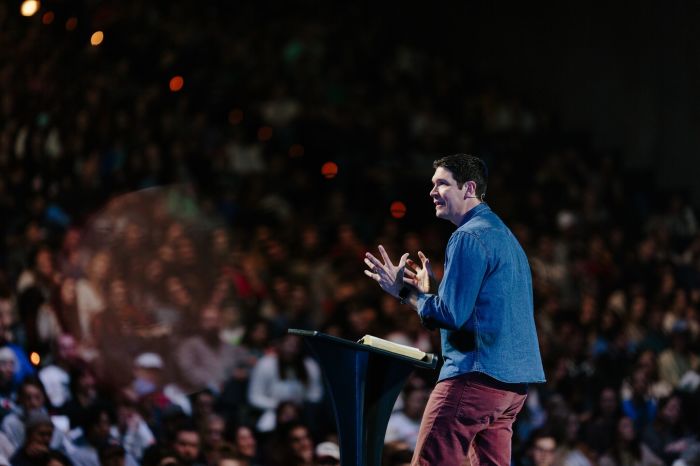
When the new coronavirus forced the shuttering of her church's in-person services in line with a stay-at-home order in March, Jeanne Stevens, lead pastor of Soul City Church in Chicago, grieved a little.
Her church was in the middle of a $9 million fundraising campaign and she had to change plans quickly.
“We were 10 days away from people making commitments,” Stevens revealed during a recent virtual gathering of several prominent pastors in late April.
She said she paused the capital campaign and explained to her congregation why.
“In some ways we had to grieve that loss and grieve that change. I think it also was a beautiful invitation to our church and them seeing our leadership [to] have a willingness to really trust and listen to God and be willing to make a turn,” Stevens said.
“I’m grateful that we did it. Grateful that we paused it. Grateful that we said, ‘God you’ll tell us when and if we are supposed to reengage this campaign.’ When I do walk over to the church and I see all the vision guys and commitment cards, I just weep a little bit,” she said with a slight chuckle.
Since the explosion of the coronavirus across the country, Stevens, along with several other megachurch pastors who were a part of the April meeting, say the pandemic has caused them to abruptly change the way they do church and plan for life in the wake of a virus whose trajectory still remains uncertain.
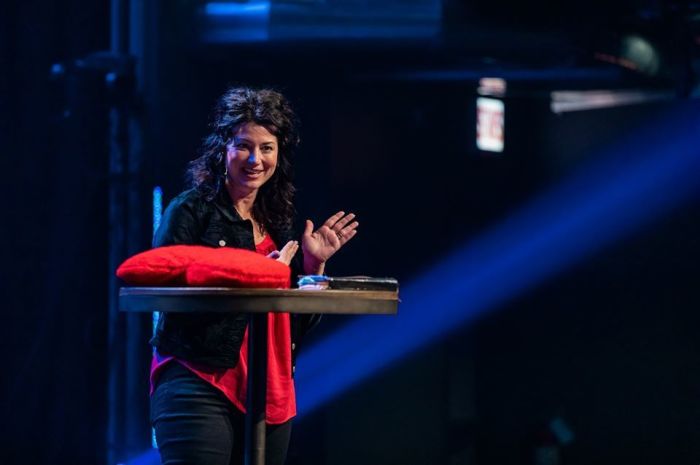
Research firm Barna Group released the results of a new survey conducted March 20 to April 27, showing how churches have been impacted by the coronavirus and how they are planning to reopen.
While some churches have already started reopening this month, most pastors (62%) forecast a June opening while some (46%) said it could be July or August before they open their sanctuaries to in-person services again.
A majority of the pastors in this study also noted that they were preparing to put significant precautions in place to reopen their churches. The most common precautions included asking people to avoid touching (77%); asking people to sit further apart (75%); and not passing an offering plate (53%). Some 84% of the pastors in the survey also confirmed that they planned to ask people who are feeling sick to stay home after social distancing requirements are lifted.
About one-third (32%) of leaders who are taking precautions said they would require congregants to wear a mask for any in-person services or church gatherings. Another 33% said they will not offer food and drink such as coffee and donuts when they return to in-person gatherings. A majority (87%) said they would also cancel mission trips for the remainder of the year.
“As a nation, we’re looking at a situation from which there’s ‘no going back.’ As a society, we will feel the impacts of the virus for a long, long time whether it’s simply a heightened awareness of sanitation practices or a new sense of gratitude towards our community,” David Kinnaman, president of Barna Group and author of the bestselling book Faith For Exiles, said in a statement.
“When it comes to the church, nearly every single pastor has had to adapt and to bring on new digital tools and resources for their congregation. I don’t see those going away anytime soon. We’ve had this amazing opportunity to grow and evolve, and I think it’s created stronger church ministries, restructured how we think about discipleship, and forever changed how we’re measuring organizational impact,” he added.
Along with changing her fundraising plans, Stevens has also had to change her messages to be more responsive to the needs of her congregants during the pandemic.
“We just started a series on how to win at waiting and a good friend of ours, [NBA player] Kyle Korver who plays for the Milwaukee Bucks [and] helped us start our church, he came in and we interviewed him … and talked about what does that feel like as a basketball player that was on a winning team that looked like they were going to the finals, how does that feel to have to wait now?” Stevens recalled.
“We got so much feedback [from] people who appreciated that conversation because all of us are waiting. And so for us to pay attention and not be tone deaf to what’s happening in the world, I think our communities and our congregations are appreciating that our ears are open versus just saying, 'well, we have this series planned and we’re just going for it anyways,'” she said.
While many pastors have been preaching to cameras inside empty auditoriums, Surratt explained that his multi-campus church in South Carolina shifted streaming sermons from inside an auditorium to a room that reflected a more intimate living room setup to mimic the environment from which many people are now engaging.
He also adjusted his teaching calendar and is now having fewer guest preachers to ensure that his congregants are hearing from him more frequently.
“We have 14 different campuses and I’ve been on zoom calls with each of those campuses. … Those are some of the things that I hope continue long after we go back to meeting. … There are ways that we can connect with our church that aren’t as hard as they seemed like they would be now that everybody’s been forced to live in this new reality,” Surratt said. “We’ve got seniors groups that have learned how to do Zoom and they’re making that happen. So the advantages are going to be that everybody’s trained onto this technology so that we can do more with it when we go back to ‘normal.’”
As many of these megachurch pastors wait to see what the end of the coronavirus pandemic will look like for their churches, they all agree that making the best use of technology to engage with their church has been more than a lifeline.
“We’re just trying to maximize technology, trying to make the best of the online church experience, trying to do discipleship as best we can in this space," said Bryan Carter, senior pastor of Concord Church in Dallas, Texas. "I think we all realize, even when we get back to our venues there is an investment we made on this side that will help continue to grow and develop the Kingdom.”
Small groups, technology and efficiency
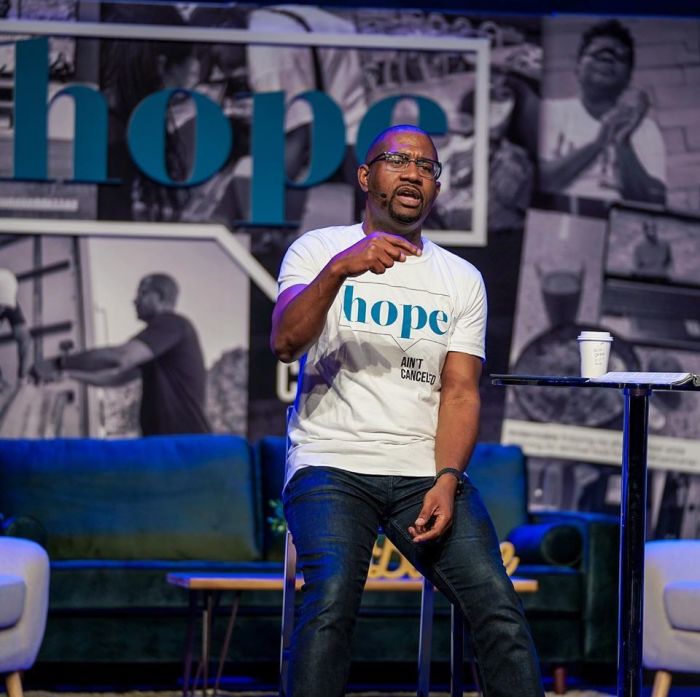
Carter, whose church has more than 9,000 members, told the group that now that his church is doing ministry exclusively online, they have been reaching more people. The ability to have members, such as singles or seniors who live alone, gather in small groups using technology has been a boon for helping people participate in real communities.
“We are really excited. I think everyone is seeing that we are reaching more people. The one thing about going to online church is that you reach more people. And so one of the dynamics of reaching more people is now we got a chance to really do a community,” the Dallas pastor said.
“Many of us agree that small groups provide a great, great channel of next steps particularly for some of the new people that we’re reaching … as well as our [current] congregation. What we’ve discovered as we talk to people, particularly our singles, is that they long for community. They long to get connected.”
They miss the conversations, he said, and “groups give us a great platform to do that.”
Matt Chandler, lead pastor of The Village Church in Texas, noted that at his church, a variety of organic small groups have emerged among members using video-conferencing platforms like Zoom to connect through prayer and worship.
“They’ll just get on and one person would play a guitar or sing, all muted, then spend time praying,” he said. “I’ve been incredibly encouraged as a pastor to just watch how people have organically said, ‘let’s just get together and worship and pray.’”
He explained that people have managed to make meetings a lot more efficient while keeping their normal routines with the use of online platforms.
“I think normal rhythms with shorter meeting times as well were seen from our group so if they met on Sunday afternoon, they are Zoom calling on a Sunday afternoon. It’s just the length of time has shrunk in regard to the time in which they need,” he said.
“I think like most of us, here in Texas that are now having to, I think nearly everywhere, everybody is homeschooling now. What you learn when you homeschool when your kids are in public school is that if you take away electives and you take away changing classrooms and you take away gym class, you know a week’s worth of school can be done in an hour and a half,” he joked.
“I think if you take away the kind of mingling in the kitchen and … you’re just doing a brief update on how everybody is doing, praying for each other and then you’re diving into either the sermon-based small group,” he said.
Stevens also sang high praises for small groups online and argued that it could be one of the things that remains after the coronavirus pandemic is over.
“We’ve been amazed at the growth that we’ve had both people watching on the weekend and people joining groups and being virtually connected. I just heard of a story … of a woman that is leading a recovery group and she has people from three different states in the recovery room,” the Chicago preacher said.
“They would have never been able to do that before this and so while I believe people are hungry to connect in person and they will long for that to happen after we are on the other side of this …, I do think we are exploring some ways that people can still virtually connect if they don’t have the physical location advantage for them,” she said. “It’s something that our task force is starting to explore, what would that look like, how can we reach more people through our groups.”
She also agreed that online ministry has allowed people to be a lot more efficient.
“I’m with Matt, our people were shortening the length of time. There is a very real thing called Zoom fatigue. And people experience it and more times on screen it's challenging and so we’re really encouraging people to shorten their time and they’re appreciating that,” Stevens said.
Rich Kannwischer, senior pastor of Peachtree Presbyterian Church in Atlanta, Georgia, said he recently started a partnership with Fuller Theological Seminary which has been “doing online spiritual formation through their online education for years.”
“We’re trying to learn from them and the interactive platforms they’ve been using for education. This is one area where certain sectors of education are way ahead of the church. We’re going to try and catch up with them on how do you not just dispense content online and have a conversation but how do you actually create community with particular aims, of particular goals. And so that’s one of the things we’re experimenting with right now to see what that might mean,” he noted.
As a result of the online migration, he said attendance at meetings have been near perfect partly because people have nothing else to do but because they no longer have to do other things like commute to meetings. The meetings themselves, he admitted, are more focused and efficient.
He noted, however, that while virtual meetings may work well for already established communities, it may be a bit more challenging to integrate new people into these virtual communities.
As the pastors focused on what restarting in-person services may look like, many of them expect to be some of the last places to reopen particularly because of their megachurch status. Some pastors are considering having multiple services with smaller gatherings over more days, including Saturday, as well as helping people overcome fears of gathering again.
Dave Dummitt, new senior pastor of Willow Creek Community Church in suburban Chicago, said, “We talk a lot about over communicating. We want to over communicate all the precautions that we’re taking, greeters have gloves on, kids area gets disinfected after every service, maybe we don’t pass the plate, maybe we don’t do the meet and greet time where we shake hands. Some of the things that we’re doing we want to make sure we over communicate to people so that they know that this is as safe a place as they can come.”
When is it safe to reopen?

Rev. Dr. Miriam J. Burnett, a practicing physician and public health expert who serves as the medical director of the African Methodist Episcopal Church Health Commission, told The Christian Post in an interview that while it is fine for churches to plan for ministry in the aftermath of the pandemic, she would not recommend gathering again until infections are “near zero.”
“Unless the numbers have gone to near zero, not trending downwards but trending off, that’s not a conversation that can happen now. It can be a planning conversation for six months or so down the line when we actually see these numbers drop but that’s not a conversation that needs implementation in the next couple of weeks,” Burnett said.
“When you look at the demographics of most churches, especially the African American community, they are all high risk,” she said.
Burnett, who also leads the Historic Jones Tabernacle AME Church, said she asked which of her members did not fall into any of the six at-risk categories when it comes to the coronavirus “and not one hand could go up.”
“My hand couldn’t go up either. So based on who you have in your congregation, you can or cannot reopen because we are all high risk or have someone we are caring for who are high risk,” she said.
“It’s OK to hold that [reopening] conversation now. We are holding conversations. I met with my trustee board … on ensuring the church is deep-cleaned [and] removing chairs so that the social distancing actually happens,” she explained.
“How do we come back into the sanctuary for service? What system are we going to use for cleaning mics? What system are we going to use to make sure that all of the mics work so that everybody has their own so we’re not passing.
“I don’t think the world is going to be normal. The question is, what’s the new normal? That’s the ultimate question. The only thing we can do is plan and make our plans fluid. That’s the key, making your plans fluid and be always ready.”

















